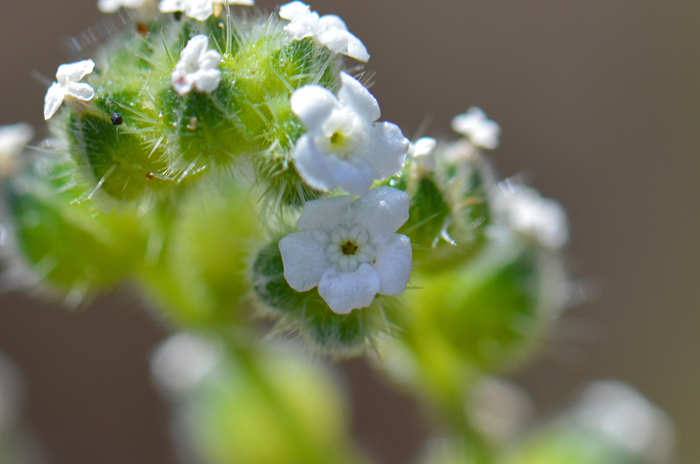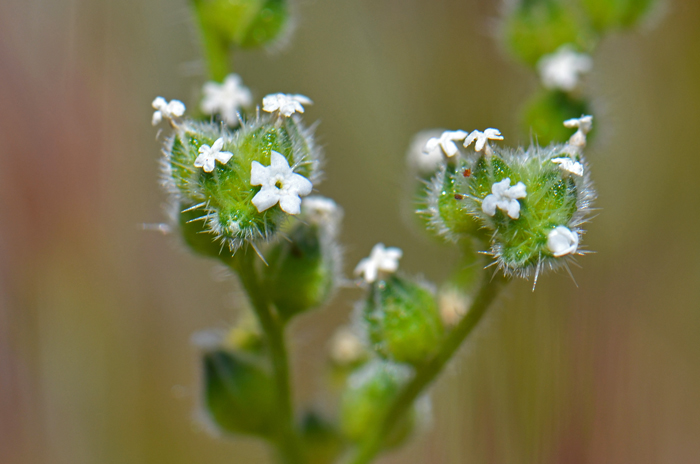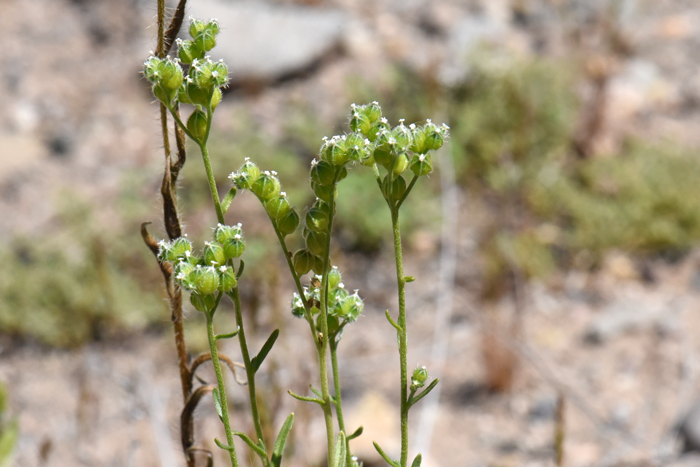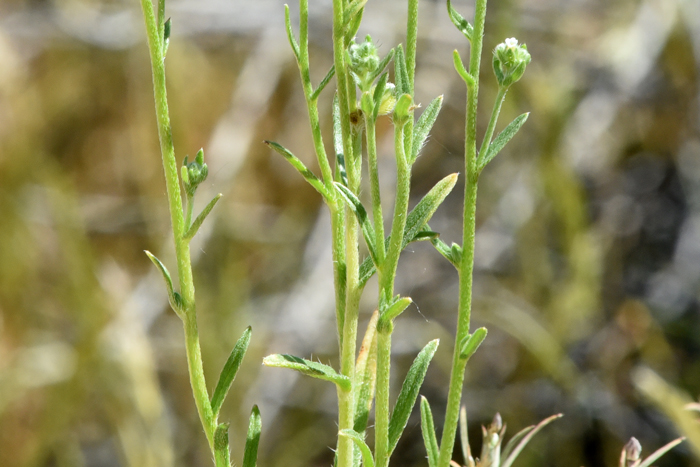Cryptantha pterocarya, Wingnut Cryptantha




Scientific Name: Cryptantha pterocarya
Common Name: Wingnut Cryptantha
Also Called: Winged Pick-Me-Not, Winged-nut Cryptantha, Wingnut Catseye, Wing-Nut Cat's-Eye, Wing-nut Forget-Me-Not (Spanish: Peluda (generic), Nievitas)
Family: Boraginaceae, Forget-Me-Not Family
Synonyms: (Eritrichium pterocaryum, Krynitzkia pterocarya)
Status: Native
Duration: Annual
Size: Up to 15 inches (40 cm) or more.
Growth Form: Forb/herb; 0 to few branches, however occasionally many, branches ascending; plants with straight, stiff, closely appressed hairs (strigose), generally rough in texture.
Leaves: Green; leaves about 2 inches (5 cm) long, linear to oblong below, lanceolate above, leaves without stalks (sessile); straight, stiff hairs (strigose, leaf bases generally bulbous.
Flower Color: White; funnelform corolla typical white, seldom yellow; flowering inflorescence a cyme but only slightly curved completely like a scorpions tail or not at all, inflorescence in 1's, 2's or 3's; fruit a nutlet that is often but not always winged.
Flowering Season: March to May or June.
Elevation: Below 4,000 feet (1,200 m).
Habitat Preferences: Rocky and gravelly soils.
Recorded Range: In the United States Wingnut Cryptantha can be found in the southwestern and northwestern states; AZ, CA, CO, ID, NM, NV, OR, TX, UT and WA. It is also native to Baja California and northwestern Mexico (Sonora). In Arizona it is found throughout the state usually below 4,000 feet elevation.
North America & US County Distribution Map for Cryptantha pterocarya.
U.S. Weed Information: No data listed.
Invasive/Noxious Weed Information: No data listed.
Wetland Indicator: No data listed.
Threatened/Endangered Information: No data listed.
In the Southwestern United States: Arizona has 37 species of genus, California has 60 species, Nevada has 44 species, New Mexico has 23 species, Texas has 15 species, Utah has 55 species. All data approximate and subject to revision.
The genus Cryptantha was published by Johann Georg Christian Lehmann in 1837.
There are 3 varieties in Cryptantha pterocarya;
Cryptantha pterocarya var. cycloptera, Wingnut Cryptantha, (AZ, CA, CO, NM, NV, TX, UT);
blooms March to May; below 4,500 feet (1,400 m); habitat: Gravelly to rocky soils, slopes, washes, often limestone-based, generally creosote-bush scrub, desert woodland, occasionally pinyon/juniper woodland.
Cryptantha pterocarya var. pterocarya, Wingnut Cryptantha (AZ, CA, CO, ID, NM, NV, OR, TX, UT, WA);
blooms March to July; (300) 656 to 8,600 feet ((100)200--2630 m.); habitat: Sandy to gravelly soils.
Cryptantha pterocarya var. stenoloba, Wingnut Cryptantha (AZ, NV).
Comments: Members of the genus Cryptantha are collectively referred to as Cat’s Eyes or Popcorn Flowers.
Cryptantha species have typically white flowers in spikes like a scorpions (scorpioid) tail. They are often difficult to identify in the field or lab and a close examination (10x loupe or dissecting scope) of the flowers and the small seeds or nutlets is usually required. Wingnut Cryptantha however has a somewhat unique easily recognizable profile with its large fruits.
In Southwest Desert Flora also see: Bearded Cryptantha, Cryptantha barbigera, Gander's Cryptantha, Cryptantha ganderi, Narrowstem Cryptantha, Cryptantha gracilis, Panamint Cryptantha, Johnsonella angustifolia (Cryptantha), Redroot Cryptantha, Cryptantha micrantha and Torrey's Cryptantha, Cryptantha torreyana.
The species epithet "pterocarya" (pterocar'ya:) "wing-nut" from Greek "pteron" and "karyon".

